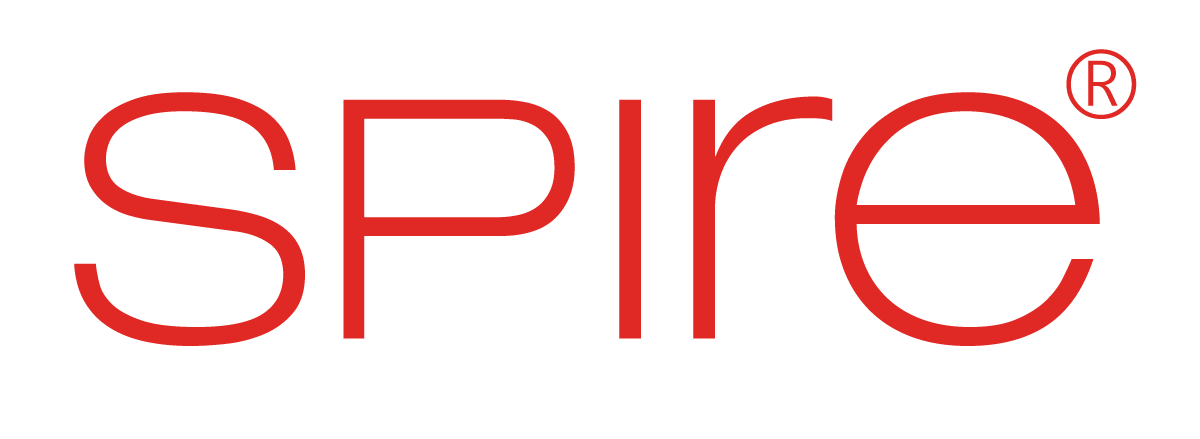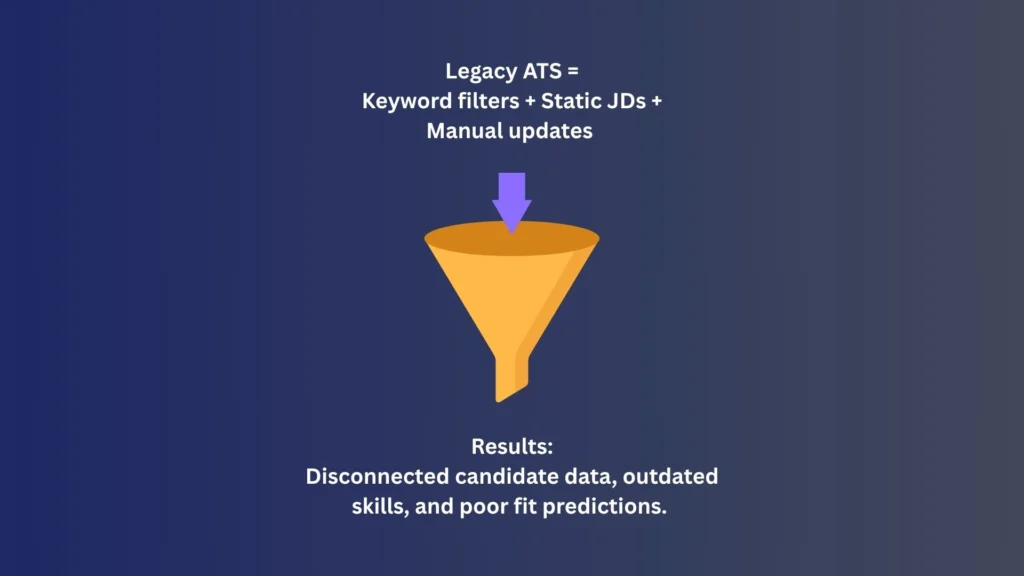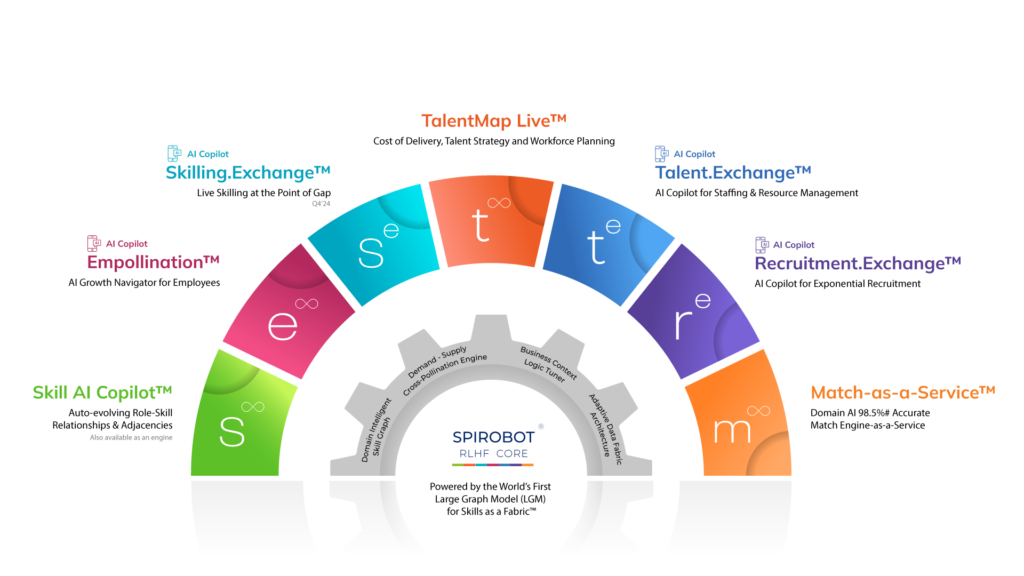For decades, resumes have been the default currency of hiring. They promise a snapshot of a candidate’s experience, education, and accomplishments. But in today’s rapidly evolving, skills-driven economy, the resume is showing its age.
Inconsistent formats, inflated claims, keyword stuffing, and a heavy emphasis on pedigree over potential make resumes increasingly unreliable as a foundation for critical talent decisions. For employers, sifting through them is time-consuming and often inconclusive. For candidates, they’re reductive and fail to capture their actual capability or learning agility.
As work becomes more complex and dynamic, organizations are realizing they need a more accurate, adaptive, and skills-centric approach to hiring, one that focuses not on where someone’s been, but on what they can actually do.
Why the Resume Falls Short in a Skills-First World
The traditional resume was designed for a world of stable job roles, linear career paths, and long tenure. But the modern workforce is none of those things. Today’s roles evolve continuously, hybrid skill sets are the norm, and learning happens on the job, often outside formal credentials.
Here’s why resumes fail to keep up:
1. They Overemphasize Experience and Education
A resume focuses on tenure, titles, and degrees, none of which reliably indicate capability in a fast-moving environment. Many critical skills today (e.g., systems thinking, data storytelling, prompt engineering) aren’t taught in universities or easily validated through traditional experience.
2. They Lack Context and Depth
Two candidates might list “product management” on their resumes, but one may have launched global platforms while the other coordinated internal feature rollouts. Without contextual information, resumes flatten skill expression and confuse hiring signals.
3. They’re Static and Often Outdated
Skills evolve quickly. The half-life of a technical skill is now estimated to be 2.5 to 5 years, yet most resumes are only updated when someone is job hunting. This results in lagging visibility into actual capabilities and growth trajectories.
4. They Reinforce Bias and Limit Opportunity
By emphasizing names, schools, and companies, resumes unintentionally fuel pedigree bias. Talented candidates without elite credentials are often filtered out early, long before their potential is evaluated.
What Skill-Based Hiring Looks Like and Why It Works)
Skill-based hiring represents a fundamental shift in how organizations approach talent acquisition. Rather than focusing on past job titles, educational pedigree, or the prestige of previous employers, it puts the spotlight on what a person can actually do in context and whether those skills match the evolving needs of the business.
What Skill-Based Hiring Looks Like
1. Role defined by capabilities
2. Candidates evaluated on applied skill
3. Matches made via context-aware profiling
4. Skilling and mobility embedded from day one
In this model, the resume becomes secondary or in many cases, obsolete. Instead of relying on self-reported achievements and vague summaries, hiring decisions are grounded in demonstrated, validated capabilities. It’s a move from assumptions to evidence.
What It Actually Looks Like in Practice
Skill-based hiring isn’t just a new filter on your ATS. It transforms the hiring process at every stage:
1. Role Design Based on Skills
Instead of recycling a previous job description, hiring teams start by defining the core skills and capabilities needed for success in the current context considering team maturity, business priorities, and projected changes. This creates a living, role-specific skill profile.
2. Candidate Evaluation Rooted in Capability
Candidates are evaluated on their ability to apply specific skills, not just whether they’ve held a similar job before. This might include:
- Portfolio or project evidence
- Simulation tasks
- Behavioral interviews focused on outcomes, not just experience
- AI-powered profiling that interprets work samples or previous deliverables
3. Talent Pools Expanded Beyond Traditional Filters
By decoupling from credential-based filters (e.g., specific degrees or years at known companies), organizations open up access to non-traditional talent, career switchers, self-taught professionals, bootcamp grads, freelancers, and returnees with applicable skills.
4. Matching is Contextual
The same skill means different things in different roles. Skill-based hiring frameworks account for this by matching candidates not just by skill tags, but by understanding how those skills were used, in what setting, and at what level of complexity.
5. Mobility and Skilling are Embedded
Skill-based hiring doesn’t stop at hire. Because skills are tracked as dynamic assets, this model naturally feeds into internal mobility and upskilling pathways, allowing organizations to continuously adapt their workforce without constantly going external.
Why It Works And Why It’s the Future
Skill-based hiring is gaining traction not just because it’s fairer or more inclusive, it’s strategically more effective. In an environment where transformation is constant, organizations need people who can adapt, not just people with the “right” résumé.
It improves quality of hire
By focusing on what actually drives performance, skills applied in context, organizations can make better predictions about role fit and impact.
It reduces time-to-fill
With clearer role-skill definitions and smarter matching, recruiters spend less time screening and more time engaging with qualified talent.
It increases retention and engagement
When people are hired into roles that align with their actual strengths and learning curves, they ramp faster and stay longer.
It expands access to diverse, overlooked talent
This model opens up pathways for underrepresented groups, career pivoters, and internal candidates, building resilience and equity into the talent pipeline.
It supports continuous talent evolution
As skills are tracked over time, organizations gain the data to proactively upskill, reskill, and redeploy, fueling workforce adaptability from the inside out.
Skill-based hiring is an organizational operating principle for the future of work. And while the shift can’t happen overnight, forward-thinking companies are already moving beyond résumés to unlock a more precise, inclusive, and agile approach to talent acquisition.
Why Traditional Hiring Tools Don’t Support Skill-Based Models
While the philosophy of skill-based hiring is gaining ground, traditional HR tools and applicant tracking systems (ATS) are still resume-centric. They rely heavily on keyword matching and predefined templates – neither of which capture the depth, nuance, or evolution of skills in real time.
Even newer platforms that claim to support skills-based hiring often rely on:
- Self-declared skill tags (unvalidated)
- Standardized skill taxonomies (lacking role specificity)
- Static assessments (detached from business context)
As a result, organizations trying to implement skills-first hiring often fall into the trap of manual mapping, inconsistent validations, or building disconnected skills databases that quickly go stale.
What’s missing is a system that can:
- Understand what a role actually requires (not just what the job description says)
- Interpret what a candidate really brings to the table
- Match both sides with business-specific context and reasoning
That’s where agentic AI comes in.
Agentic AI: A New Paradigm for Talent Matching
Agentic AI is a new class of enterprise intelligence that doesn’t just automate tasks; it acts with purpose, context, and reasoning. In hiring, this means going beyond resume parsing to orchestrate high-fidelity, role-skill matches based on how work is performed in a real-world business setting.
Unlike keyword-based systems, agentic AI:
- Understands the functional intent behind a role, based on your organizational structure, business objectives, and ongoing talent signals
- Profiles candidates contextually, interpreting what their experience means in relation to a role’s current and future demands
- Validates skills dynamically, using behavioral cues, work artifacts, and applied outcomes—not just self-claims or test scores
- Learns and adapts continuously, evolving as business needs shift, new skills emerge, and internal talent pools grow
Think of it as a hiring co-pilot that doesn’t just source or score; it reasonably decides who is most aligned to the business need, in real time.
The Role of Context in Skill Matching
One of the biggest strengths of agentic AI is its ability to interpret context. A candidate’s “communication” skill in one organization might mean executive stakeholder management; in another, it might involve simplifying data for technical teams. Traditional tools can’t tell the difference. Agentic AI can.
This contextual awareness allows organizations to:
- Surface non-obvious candidates whose skills align but may be hidden under conventional filters
- Better predict on-the-job success
- Reduce bias by focusing on verifiable behavior and task outcomes rather than brand-name credentials
It’s this level of interpretive intelligence that makes skill-based hiring not just possible, but scalable.
From Talent Guesswork to Precision Hiring: How Spire.AI Powers the Shift
Skill-based hiring requires more than good intentions; it demands a system that can understand roles as they evolve, interpret candidate potential in context, and connect both in real time. This is exactly where Spire.AI delivers transformative value.
Most organizations today struggle with fragmented systems: resumes sit in an ATS, skills are manually updated (if at all), and hiring managers rely on intuition or keyword matches to make pivotal decisions. Spire.AI replaces that guesswork with a Domain-intelligent, agentic AI platform that drives real-time, context-rich hiring decisions at scale.
Here’s how Spire.AI makes true skill-based hiring operational and sustainable:
1. Real-Time Role-Skill Profiling with Business Context
Instead of relying on outdated job descriptions or generic competency models, Spire.AI continuously profiles roles based on live enterprise signals, including projects, priorities, transformation programs, and organizational structure.
Its Large Graph Model (LGM) for Skills updates role expectations dynamically, mapping not just required skills, but the depth, dependencies, and business relevance of each. This means a “product manager” in your cloud division will carry a different profile than one in marketing ops because their environments and outcomes demand different capabilities.
2. Contextual Candidate Profiling Beyond Resumes
It builds contextual candidate profiles by interpreting real-world work artifacts projects completed, impact delivered, cross-functional behaviors, and more.
Rather than asking, “Has this person held the right job title?”, the platform asks, “Has this person applied the right skills in the right context, and can they do it again here?” It analyzes evidence of capability, not just claims of experience.
This allows recruiters and hiring managers to uncover non-obvious candidates who may not have traditional credentials but are demonstrably equipped to succeed.
3. Agent Sigma: The Autonomous Talent Copilot
Agent Sigma, an agentic AI that doesn’t just automate hiring workflows but acts with intent to drive the right match between role and talent.
- Interprets enterprise needs through role signals and team requirements
- Evaluates candidate readiness in real-time
- Recommends candidate-role matches based on demonstrated fit, not keyword scores
- Surfaces personalized skilling or readiness gaps if needed
It’s like having a Domain-intelligent recruiter working 24/7; one who understands your business, your roles, and your talent pool.
4. Validation Through Live, Operational Signals
Validates skills not through assessments or self-reports but by tracking how skills are applied in actual work environments. The platform uses enterprise logic to confirm whether a skill has been demonstrated at a level relevant to your business outcomes.
This eliminates the guesswork from hiring decisions and reduces reliance on proxies like tenure, degrees, or brand-name employers.
5. Continuity Across the Talent Lifecycle
What sets Spire.AI apart is that hiring doesn’t happen in isolation. Because the platform is built on a continuously evolving skills graph, it supports:
- Internal mobility and redeployment
- Proactive skilling and upskilling programs
- Strategic workforce planning
Every hire becomes part of a living system where skills are tracked, refined, and validated continuously, not just at the point of entry.
Conclusion
We may not witness the complete disappearance of resumes overnight. But their role as the central artifact in hiring is quickly diminishing.
As business needs become more fluid and skills continue to evolve rapidly, the question isn’t who looks best on paper, it’s who’s best equipped to solve tomorrow’s problems today. That answer can’t be found in a document – it lives in context, outcomes, and capability.
Platforms like Spire.AI make it possible to transition from guessing at fit to knowing it with precision and speed. The future of hiring isn’t just paperless; it’s intelligent, dynamic, and built around what truly matters: skills in action.







